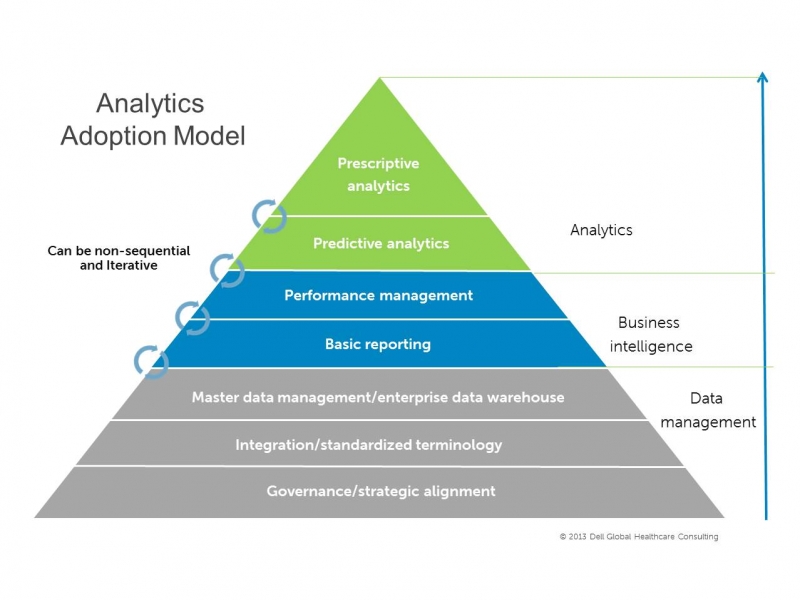Start with an assessment of your readiness
To help answer that question, my colleagues and I have created a seven-stage Analytics Adoption Model. It mirrors the HIMSS EMR Adoption Model, in that it identifies capabilities that build from a foundation, and it also defines distinct stages of development and the work that can be accomplished at each stage.

Assessment is the first step in making analytics integral to your operations, and this tool can help you assess your organization’s current capabilities. It can also help you identify areas within your organization that are ready for analytic projects.
If you don’t have in-house expertise, engage an analytics consulting group to help with your audit.
In the Analytics Adoption Model, the first three stages form the data foundation needed for any analytics endeavor:
- Governance and strategic alignment: Deciding who has responsibility for gathering and managing the data; aligning your analytic and data gathering approaches to your strategic goals.
- Integration and standardized terminology: Creating a standard definition for all terminology and integrating data from all aspects of your enterprise.
- Master data management and creation of an enterprise data warehouse: Adopting a systematic approach to warehousing and managing data from across the enterprise.
The next two stages are essentially business intelligence activities:
- Basic reporting functions for operations and regulatory compliance.
- Performance management, including enterprise-wide dashboards and scorecards.
In the final two stages are the analytics that can help you succeed in an ACO environment:
- Predictive analytics, using historical data to predict future events and risks: This includes readmission management and preventative care management, tools to identify gaps and variations in care and their effects on outcomes.
- Prescriptive analytics: Includes real-time clinical decision support and real-time population health management, with registries, alerts and reminder cues.
Look for opportunities for test projects
Your assessment should look at each department or business unit’s stage of development, because you’ll likely find wide variations within one enterprise. For example, departments that have been deeply involved in quality improvement projects are probably using data for business intelligence activities, and may be at stage 4 or 5, while other areas may not even be collecting performance data yet. You may find opportunities to design predictive and prescriptive analytic projects within these more advanced groups, even if the organization as a whole hasn’t mastered all the foundation capabilities. Such limited-scope projects create an opportunity for early success and can demonstrate to the organization the value of analytics and data collection.
If your hospital has not developed a culture of measurement, that needs to change. Systematic gathering of critical data must become an ingrained habit if you are to achieve a foundation for good analytics.

















